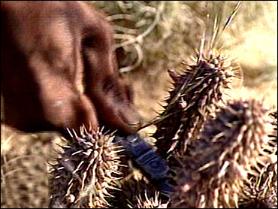Causes of excessive hair loss
Scalp reduction is performed on patients with well-defined bald spots in the crown area of the scalp. It is sometimes done in conjunction with hair transplantaion to reduce the size of the bald scalp, especially in patients who do not have enough donor hair to cover the bald areas. The chief difference in womens androgenic hair loss from mens (both are hormone related) is that women tend to experience thinning that occurs in no particular pattern or part of the scalp. Unlike men, the scalp may not actually be totally denuded of hair, just thin to the point where the scalp is visible. Like men, however, the resulting hair loss is generally irreversible. Do you feel that you are the only one losing hair? You're not! The most common form of hair loss, Androgentic Alopecia, or pattern baldness, is experiences by 50-80% of Caucasian men. The number of Chinese males affected are half of the Caucasian counterparts while African Americans have a lower incidence of the condition as well. For women androgenetic alopecia occurs between 20-40% of the general female population. In summary, it is safe to say that pattern baldness is experienced by the norm of the population, you're not alone, but actually in the majority. In most cases, immediately after the hair transplant the hairs fall out of the grafts, and do not regrow for 1-3 months. After this they begin to grow as normal hair. With each session there is more hair, and the resulting appearance is thicker hair. Hair requires the same overall nutrition that the body does: plenty of fresh fruits and vegetables, grains and protein including lean meat and fish. Dietitians recommend foods high in biotin, including brown rice, bulgar, brewer's yeast, soybeans, green peas, lentils, oats, sunflower, seeds and nutritious nuts. |
What are the symptoms of menopause?
A woman is said to be in menopause after she has gone for one full year without periods. While most women in the United States go through menopause around the age of 51, a small number will experience menopause as early as age 40 or as late as their late 50s. Rarely, menopause occurs after age 60. When menopause is diagnosed before age 40, it is considered to be abnormal or premature menopause. Perimenopause, also known as the climacteric, includes the time before menopause when hormonal and biological changes and physical symptoms begin to occur. This period lasts for an average of three to five years. As estrogen levels fall, the vagina's natural lubricants decrease. The lining of the vagina gradually becomes thinner and less elastic (less able to stretch). These changes can cause sex to be uncomfortable or painful. They can also lead to inflammation in the vagina known as atrophic vaginitis. These changes can make a woman more likely to develop vaginal infections from yeast or bacterial overgrowth and urinary tract infections. |
Hoodia. What is it?
If you haven't heard of Hoodia yet, you soon will because it is being touted as the new miracle supplement for safe, effective weight loss. Hoodia gordonii, (Hoodia) is the botanical name for a cactus like plant that grows in Southern Africa. Scientists have recently isolated several compounds in this amazing plant that are responsible for dramatic weight loss. This all-natural appetite suppressant is also being applauded for containing no dangerous stimulants that caused adverse side effects associated with weight loss products of the last decade. To be eligible for export to the USA and all other nations, Hoodia farmers must obtain a C.I.T.E.S. certificate which is issued on a per export-shipment basis. The Hoodia Gordonii plant originated in the southwestern part of Africa and grows best in the semi-arid areas of South Africa primarily the Kalahari. In its native habitat it is extremely difficulty to identify because it looks similar to succulents of the same family of which there are many. Only an experienced botanist or as the case in South Africa with Hoodia Gordonii a San people can identify the plant prior to it's blooming. Hoodia was eaten as a fresh food by the San tribe for thousands of years with zero side effects. ow long Hoodia take to work? With-in one hour after taking 2 capsules, Hoodia will suppress your appetite for around 4-8 hours. |
|
|
Read our other articles:
Learn common symptoms of depression
Weight management today
Erectile problems
Take care your skin
How much teeth you have?
Predicting potential problems